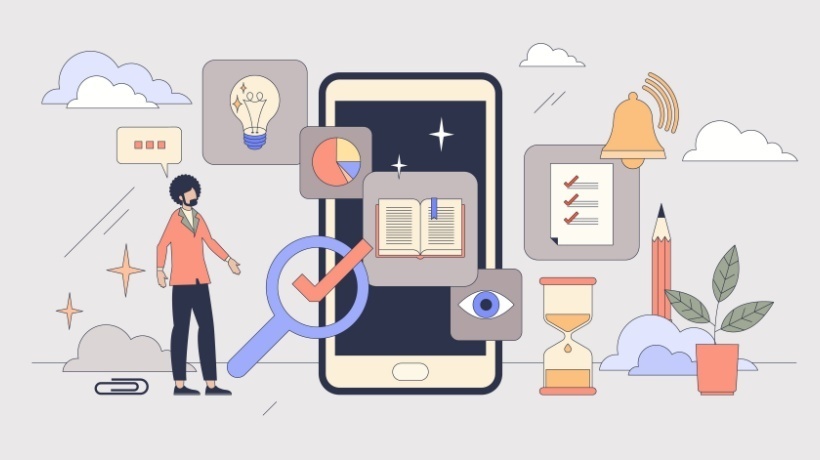Exploring The Future Of Training: Digital Or Biological?
The World Economic Forum Future of Jobs Report 2018 stated that ‘by 2022, no less than 54% of all employees will require significant re- and up-skilling. Of these, about 35% are expected to require additional training of up to 6 months, 9% will require reskilling lasting 6 to 12 months, while 10% will require additional skills training of more than a year’.
Context Is Everything
If the above is true and, more significantly, if the training outlined were delivered, business would grind to a halt. It is simply not possible to take the suggested proportions of the workforce out of the workplace for any meaningful period of time without it having a profound operational impact on organisations.
The requirements for new skills are being driven by technology and such projections assume its adoption. In reality, technology can only be adopted as quickly as skills allow so the report should really be stating that if the desired rate of adoption of new technology is to be achieved, it would be necessary to deliver the amount of training suggested.
But, the underlying message of the report is clear. Pressures on training, on L&D departments and resources, are only going to increase. Training requirements and the rate of changes of those requirements are also going to increase. So, what is the answer? How do organisations re-skill and up-skill an ever-increasing percentage of their workforce? Because the ones that achieve this will gain a competitive advantage and those that don’t, risk obsolescence.
Is Digital Learning The Key?
Back to the question at hand. The common consensus is that digital, in whatever form, holds the key to delivering against the increasing need for training. I, however, disagree. It is part of the solution, and a vital part, but not in itself the answer.
Digital learning is scalable, it is operationally efficient (not having to get people together to sit in a classroom), and can it be consumed anytime and anywhere. But the problem faced is not just one of scale and ease of assess. It is also about the time it takes to actually learn and effectiveness of the learning process. It is not technology that holds the answers to these questions, it is biology.
All current teaching and training techniques, whether classroom-based or digital, primarily address the short-term working memory. This has two limitations. Firstly, the processing power of the working memory is slow which limits the speed at which information can be taken in. Secondly, we quickly forget what we have learnt which results in poor learning application and drives the need for knowledge reinforcement and refresher training. If we are to address the increasing training needs, speed and effectiveness of learning are at the heart of the solution.
This Ιs Where Biology Comes In
Neuroscience has revealed how the brain forms long-term memory and practical applications of this neuroscience have been developed. As a result, it is possible to embed learning directly into the long-term memory which has multiple benefits.
The long-term memory is significantly faster than the short-term working memory. Figures vary as to how much faster but, one estimate is 300,000 times faster! So, it is possible to speed up the learning process considerably. In peer-reviewed research conducted by our own Dr. Paul Kelley, 23 hours of classroom learning was compressed into just one hour through the application of neuroscience-based techniques with no loss of learning outcome. Subsequent trials, including a 600-student trail by the University of Surrey, utilising a digitally delivered approach have seen week-long courses compressed into just one hour with no loss of learning outcome, and shorter courses reduced in time by as much as 75% whilst learning outcomes were improved by 20-30%. And, this learning has gone into the long-term memory, it has stuck and can be applied by the learner. Biology can deliver better learning outcomes, quicker.
And it does not stop there...
Physiology Also Has A Role To Play
Circadian rhythms are in the news more and more. By identifying the circadian rhythm of an individual, it is possible to identify the best time for them to work, rest, exercise and, you guessed it, learn. There are currently large studies going on to understand the circadian rhythms of children with a view to changing the start time, finish and duration of the school day to better match the requirements of the students. In business, where it is possible for individuals to learn by themselves, identifying their circadian rhythms and optimum learning time will aid their receptiveness to the information and their ability to take it in quickly will be enhanced. Learning efficiency and effectiveness are further increased.
I could go on. Virtual Reality, for instance, can add a physical element to learning which can also enhance results, but I think I have made my point. Digital enables the delivery of learning, at scale, in numerous formats, but it does not actually address the fundamental learning mechanisms that could make all the difference to delivering against the growing need. Only the understanding and application of human biological factors can do that.









